Contact : 416-385-0110
Sports Specialist Rehab Centre voted as Top Chiropractic Clinic of 2018 in Toronto by Top Choice.

The strain and effort required to play golf should never be underestimated. Forgetting to warm up can cause unnecessary injury and an unwanted visit to a health professional. Here are a few easy stretching techniques that can be done in 5 minutes to help you get in the game without the pain.
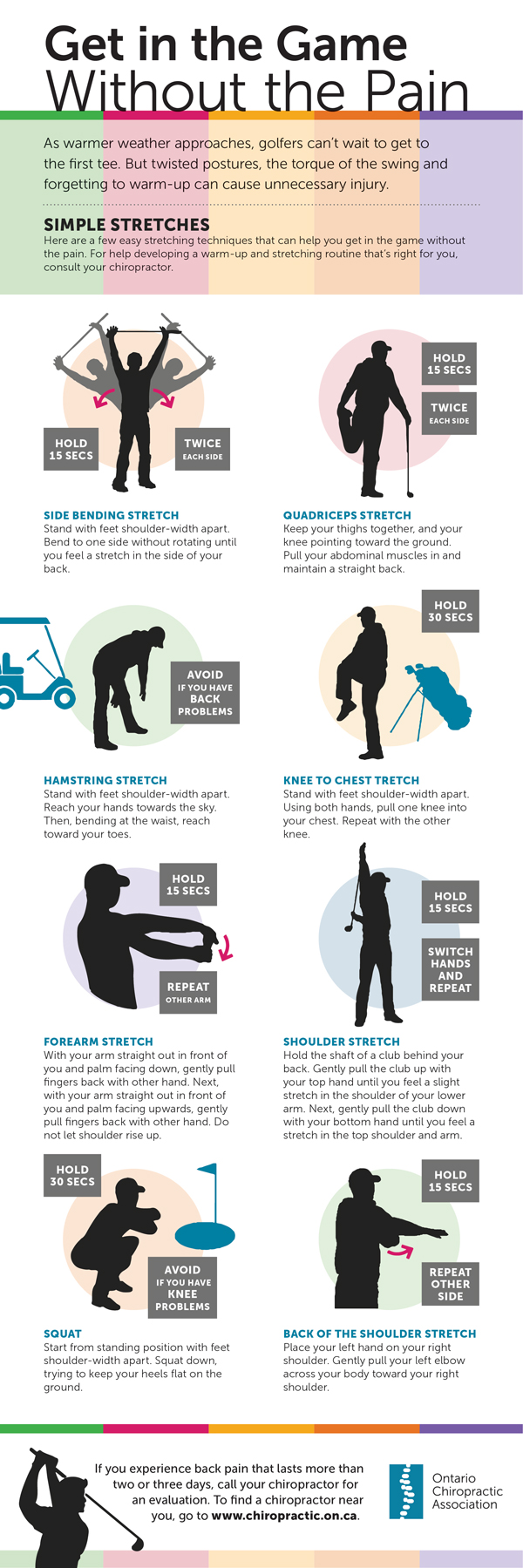
Source: This post is originally written by the Canadian Chiropractic Association

In the flurry of packing for a vacation or business trip, it’s easy to get carried away and pack everything but the kitchen sink into your suitcase and carry-on. But over-packed luggage and improper lifting and carrying techniques are common causes of injury to the back, neck and shoulders.
The good news is many of these injuries can be easily prevented. The following tips can help take the pain out of your vacation:
Choosing your luggage:
Packing your luggage:
Lifting and carrying your luggage:
Lifting your luggage can’t always be avoided, even if your luggage has wheels. But practising safe lifting techniques can substantially reduce your risk of injury.
Source: This post is originally written by the Canadian Chiropractic Association.

Sports Specialist Rehab Centre crowned Top Choice Award Winner for Top Chiropractor in the 2017 Annual Top Choice Award Survey.
Toronto, Ontario, CA — March 10th, 2017 — Top Choice Awards has announced that Sports Specialist Rehab Centre has been crowned the winner for Top Chiropractor of 2017 in the city of Toronto. Sports Specialist Rehab Centre has set new standards for quality, service, image, value and professionalism.
We have excelled in our category through hard work and complete dedication to our customers. This award is a testament to the skill, passion and vision of our company. We truly appreciate this recognition and the association with the exclusive Top Choice Award circle of winners in North America.
Top Choice Awards is an International market research firm, focusing on the experience of the customers. Since 2005, winners are released annually to recognize and showcase the most trusted and appealing service organizations and businesses across North America; with the launch of their new social media voting platform; VoteForUs.ca surveying 28 cities and gathering information from over 998,000 voters, their 2017 Survey was the most successful survey year to date.
We at Sports Specialist Rehab Centre would like to thank all of the voters for voting us your Top Choice and we trust to always have your support by our side. Cheers to a great year ahead.
On behalf of our team we would like to extend our warmest congratulations to all of the winners and nominees of the 2017 Top Choice Award Survey.
ABOUT US
www.sportsrehabto.com
About the Top Choice Award
TopChoiceAwards.com – Top Choice Awards collects and reviews the opinions of thousands of customers annually. The results of those studies are used by companies to improve customer satisfaction and business development while our social promotion system gives customers the power to enjoy Top quality experiences through making educated purchasing decisions.
Sports Specialist Rehab Centre
300 York Mills Rd., Suite 205
Toronto, Ontario
(416) 385-0110

We all know that everyone has their own favorite sleeping position. The hard reality is that some positions are safer than others. Below, Drs. Marco and Paolo De Ciantis will discuss the 3 most common sleep positions and how they can affect you!
Stomach Sleeping:
In general, sleeping on your stomach is the worst position. In order to breathe, your head has to be placed in a rotated and possibly extended position (if you’re using a pillow while sleeping) for a prolonged period. Over time, this rotated and extended position can result in muscle-tendon or even ligament injury resulting in a strain or sprain, respectively. In extreme scenarios, this position can even result in neck, upper back and even shoulder joint irritation or injury. While some may love to sleep on their stomach, it should be avoided.
Back Sleeping:
This is one of the safest sleeping position! In this position the body is allowed to maintain a natural anatomical position with the head being supported by a pillow and the back (upper and lower) supported by the mattress.
Side Sleeping:
Side sleeping is a double-edged sword having good and bad qualities. Sideline sleeping is great for individuals who are suffering from low back or pelvic pain. If you’re suffering from either, sleeping on your side (painful side up) with a small pillow placed between your knees (hips and knees flexed) can facilitate sleep and may alleviate some pain. This position can even assist those suffering from shoulder pain. Sleeping with the painful shoulder up and a small pillow between your elbow and rib cage can help. Over time, this position could also lead to joint or muscular discomfort so, if performed, it should be alternated with back sleeping in order to reduce the likelihood of injury.
If you should have any questions regarding sleeping positions, feel free to e-mail or call Drs. Marco and Paolo De Ciantis. Happy sleeping!
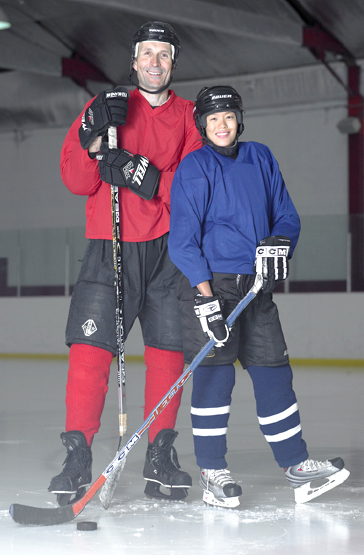
STARTING OUT:
If you are new to the game, get checked by a health professional such as a chiropractor to make sure it’s an appropriate fitness activity for you. If you are a regular player, routine chiropractic check-ups can help optimize your muscle and joint function and deal with stiffness and soreness before they sideline you.
REMEMBER: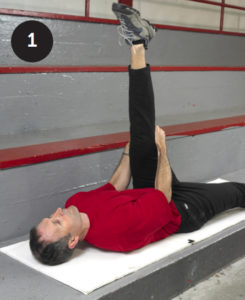
Lay on your back and bend one knee towards the ceiling. Hold the back
of the thigh with both hands and straighten the knee as much as you can by raising your foot towards the ceiling. Hold the stretch for one second, then bend the knee and straighten again. Repeat 20 times on each leg.
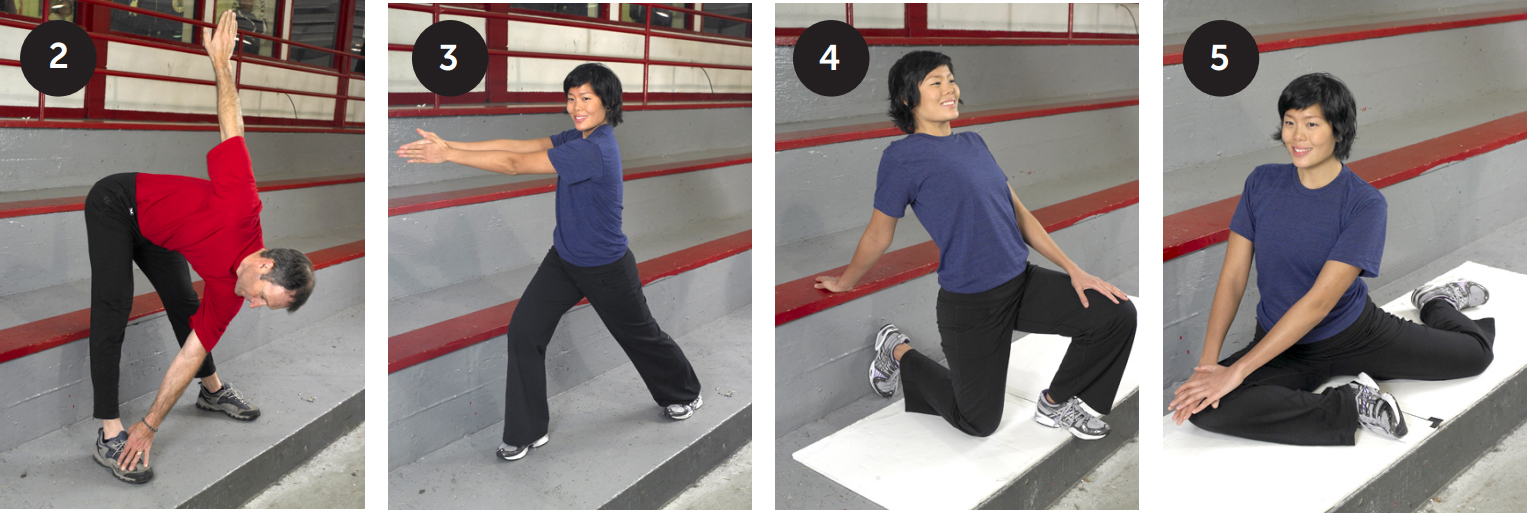
Stand with your feet slightly wider apart than your shoulders. Bend your knees. Shift your weight to the right leg. Reach down and across your body with your left hand to touch your right foot. Point your right hand up to the ceiling. Keep your back parallel to the ground. Shift your weight to the left leg. Repeat 10 times on each side.
Stand with your feet shoulder-width apart. Step forward with your right foot into a lunge position. Your right knee should be directly over the toes of your right foot. Keep your left leg and your back straight. Extend your arms straight in front of you and bring your palms together. Turn your upper torso to the right keeping pelvis and hips stationary. Hold for one second and repeat 10 times on each side.
Stand with your back to a wall or the rink boards. Kneel onto your right knee (use a pad for cushioning) with your right foot flat against a wall. Your left knee should be bent in front of you at a 90 degree angle for support. Place your hand on your left knee for balance and lean back slightly to stretch your right quad muscle. Hold the stretch for ten seconds. Switch legs and do three stretches on each side.
Sit on the ground with one leg slightly bent behind you and one leg slightly bent in front of you. Lower your chest toward your knee keeping your back straight and holding your chin up. Hold the stretch for 10 seconds. Switch legs and repeat three times on each side.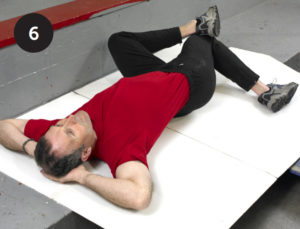
Lay on your back with your knees bent and feet flat apart on the floor slightly more than shoulder width apart. Lower your right knee to the floor and place your left ankle on top of it pushing the knee towards the ground. Keep your hips on the floor. Hold the stretch for 10 seconds. Switch sides.
Source: This post is originally written by the Canadian Chiropractic Association.

Sports Specialist Rehab Centre won Top Choice Award for Best Chiropractor in Toronto 2017.
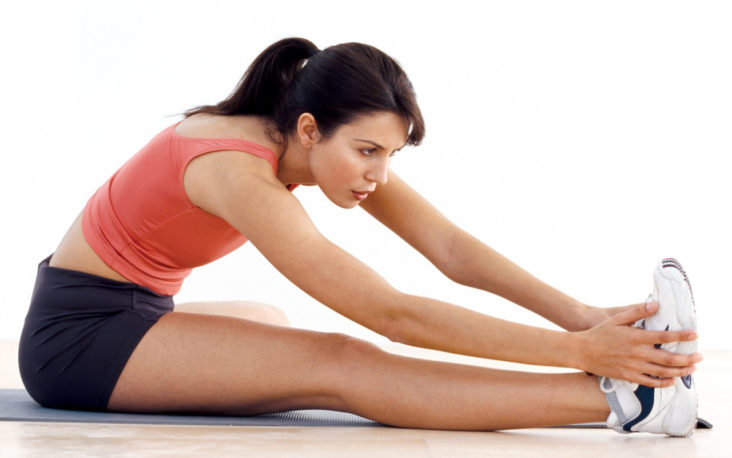
For years there’s been conflicting information given regarding the dangers and benefits of stretching. Is dynamic stretching better than static stretching? Should stretching be done with or without a warm-up? Does stretching prevent injury or encourage it? These are only a few of the many questions being studied right now about stretching.
A recent 2016 systematic review published in Applied Physiology, Nutrition, and Metabolism clarifies the IMMEDIATE EFFECTS of stretching on performance. Today we’ll cover the broad strokes of this publication, speaking to the various long standing questions about certain aspects of stretching.
Stretch Duration (Short vs. Long Stretch Durations)
Five studies imposed stretching interventions lasting less than 5 minutes. Of those, 2 studies showed a benefit to stretching, where others showed benefits of stretching with lower injury rates associated with stretching for greater than 5 minutes. Thus, longer (total) duration stretching may have a greater potential to decrease injury risk.
Stretching With vs. Without Warm-Up
Based on the current body of research, it is not possible to comment on the role of stretching with respect to injury prevention when performed with or without warm-up. However, because muscle stretching and warm-ups may have similar effects on muscles elastic (“stretchability”) properties, it is possible that both may influence injury risk.
All-Cause Injury Rate vs. Specific Injury Rates
Six studies specified the effects of stretching on the prevalence of acute muscle injuries. Form these studies, it was possible to compute the relative risk of sustaining an acute muscle injury associated with stretching versus not stretching. Taken together, these studies indicate at 54% risk reduction of acute muscle injuries associated with stretching!
One study also indicated that stretching was associated with a reduction in “bothersome soreness”. However, most research has demonstrated that stretching prior to exercise is ineffective in reducing soreness or other symptoms of muscle damage, with one recent exception showing some benefits of stretching.
Reference: Behm, DG, Blazevich, AJ, Kay AD, and McHugh, M. Acute effects of muscle stretching on physical performance, range of motion, and injury incidence in healthy active individuals: a systematic review. Applied Physiology, Nutrition, and Metabolism. 2016; 41(1): 1-11.
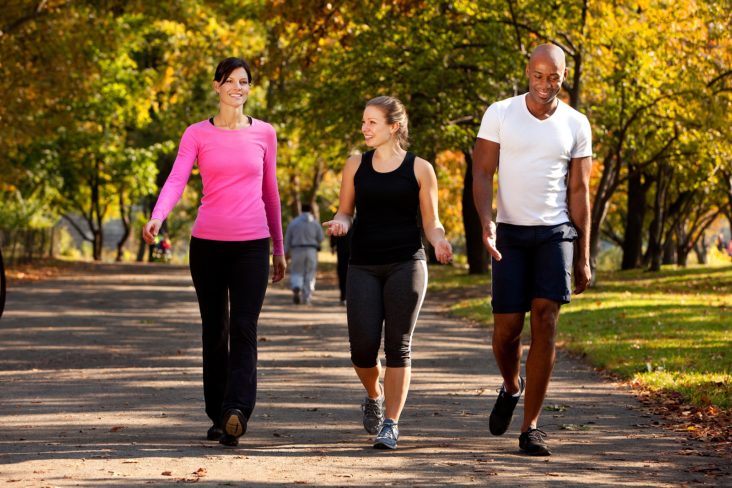
It’s a brand new year and for many of us this means setting new goals and personal resolutions. Focusing on improving our health and fitness is a common goal. For those looking to lose some weight this new year, to jump into an exercise program or just a desire to get active, walking is a simple and easy place to start. The knowledgeable staff at Sports Specialist Rehab Centre want to inform you why walking can make a real difference in your life this year!
Why Walk:
Health Benefits of Walking:
Social Benefits of Walking:
How to Start: